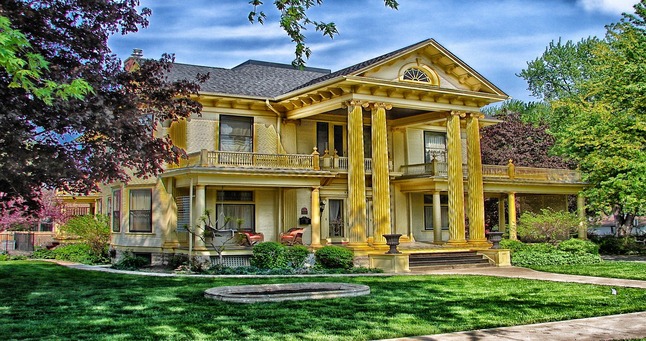Day by day, the importance of sustainable living becomes clearer. Homeowners and interior design enthusiasts alike are increasingly exploring eco-friendly materials for their home builds. This trend isn’t just about aesthetics; it’s about making a positive impact on the environment. In this blog post, we’ll take you on a comprehensive journey through the world of “green” building materials. You’ll learn why they’re beneficial, the best options available, and how to seamlessly incorporate them into your next home project.
 Why Choose Green Materials?
Why Choose Green Materials?
Environmental Benefits
Using eco-friendly materials in home construction offers multiple environmental benefits. Firstly, it reduces the carbon footprint associated with traditional building methods. These materials are typically sourced responsibly, meaning they cause minimal environmental harm. Secondly, green materials often have a longer lifespan and are more durable, reducing the need for frequent replacements. Lastly, they can improve indoor air quality by reducing toxins and allergens, making your home healthier for you and your family.
Healthier Living Spaces
Green materials create healthier living environments by minimising exposure to harmful chemicals. Traditional building materials often contain volatile organic compounds (VOCs) that can cause respiratory issues and other health problems. Eco-friendly alternatives, however, are free from these harmful substances, ensuring your home is a safe, comfortable place for everyone.
Economic Advantages
While the initial cost of green materials might be higher, they offer long-term financial benefits. These could include reduced energy bills and lower maintenance costs. Additionally, homes built with sustainable materials tend to have higher resale values, making them a wise investment for the future.
The Best Green Materials for Your Home Build
Natural Options
Natural materials are often the go-to for eco-conscious builders. These include items like bamboo, cork, and reclaimed wood. Bamboo and cork are both rapidly renewable resources, making them highly sustainable. Reclaimed wood not only saves trees but also adds a unique, rustic charm to your home.
Recycled Materials
Recycled materials breathe new life into what would otherwise be waste. Recycled metals, glass, and plastics can be used for various purposes, from structural elements to decorative features. They reduce the burden on landfills and often come at a lower cost than new materials.
Energy-Efficient Choices
Energy-efficient materials help reduce the amount of energy needed to heat and cool your home. Insulated concrete forms and structural insulated panels are excellent examples. They maintain indoor temperatures efficiently, leading to significant savings on your energy bills.
In-Depth Look at Each Material
Bamboo
Bamboo is one of the fastest-growing plants on Earth, making it a highly renewable resource. It’s incredibly durable, often stronger than traditional hardwoods. Bamboo can be used for flooring, cabinetry, and even structural elements. While it may be slightly more expensive than other options, its longevity and minimal environmental impact make it worth the investment.
Cork
Cork is harvested from the bark of cork oak trees, which regenerate after harvesting. This makes it a renewable and sustainable choice. Cork is excellent for flooring due to its natural insulation properties. It’s soft underfoot and provides excellent thermal and acoustic insulation. Though it might cost more upfront, its durability and unique aesthetic make it a popular choice.
Reclaimed Wood
Reclaimed wood is sourced from old buildings, barns, and factories, giving it a second life. It’s not only environmentally friendly but also full of character and history. Reclaimed wood can be used for flooring, beams, and furniture. The cost varies depending on the wood’s age and rarity, but its unique look often justifies the price.
Recycled Metal
Recycled metal is a versatile material that can be used for roofing, siding, and structural components. It’s durable and often more affordable than new metal. Using recycled metal reduces the need for mining and processing new metal, significantly lowering its environmental impact.
Insulated Concrete Forms (ICFs)
ICFs are hollow blocks or panels made of expanded polystyrene. They are stacked to form the walls of a building and then filled with concrete. This creates a highly energy-efficient structure. ICFs are excellent for maintaining indoor temperatures, reducing the need for heating and cooling. While they are more expensive than traditional concrete, the energy savings over time can offset the initial cost.
Structural Insulated Panels (SIPs)
SIPs consist of a layer of foam insulation sandwiched between two layers of structural board. They are used for walls, roofs, and floors, providing excellent thermal performance. SIPs are quick to install, reducing labor costs and construction time. Their high efficiency can lead to substantial long-term energy savings.
Real-World Examples
Case Study 1 The Smith Family Home
The Smith family decided to build their new home using bamboo flooring and reclaimed wood beams. They were thrilled with the unique look and durability of the materials. Their energy bills have significantly decreased, and they love the fact that their home is environmentally friendly.
Case Study 2 Green Office Space
A small business in Sydney renovated their office space using recycled metal for the roofing and cork for the flooring. The materials not only provided a modern, sleek look but also improved insulation and reduced noise levels. The employees have reported a noticeable improvement in air quality and overall comfort.
Testimonials from Satisfied Homeowners
“My new home feels so much healthier now that we’ve used green materials. The air quality is noticeably better, and I love knowing that we’ve made an environmentally friendly choice,” says Jane Doe.
“We used SIPs for our extension, and the difference in our energy bills has been incredible. Plus, the house stays at a comfortable temperature year-round,” shares John Smith.
Tips for Incorporating Green Materials
Start Small
If you’re not ready for a full-scale renovation, start small. Replace traditional light bulbs with energy-efficient ones, use bamboo for minor fixes, or incorporate recycled materials into your decor.
Consult with Experts
Consulting with experts can make a significant difference. They can provide insights into the best materials for your specific needs and help you make informed decisions. Working with professionals ensures that you choose the most effective and sustainable options available.
Plan for the Future
Consider future-proofing your home by incorporating materials that will stand the test of time. Think about durability, maintenance, and long-term environmental impact. Investing in high-quality, sustainable materials now can save you time and money down the line.
Making Sustainable Choices
Choosing green materials is more than a trend; it’s a responsibility. By opting for eco-friendly options, you’re contributing to a healthier planet and a healthier home. The long-term benefits of these choices—both financial and environmental—make them a wise investment for any homeowner or interior design enthusiast.
Ready to make your home more sustainable? Share your experiences with green materials in the comments, and consider the environment in your next home project. Together, we can build a greener future, one home at a time.
Thank you for taking the time to read about the best green materials for your home build. If you have any questions or need further guidance, don’t hesitate to reach out. We’re here to help you make the best choices for a sustainable and beautiful home.




